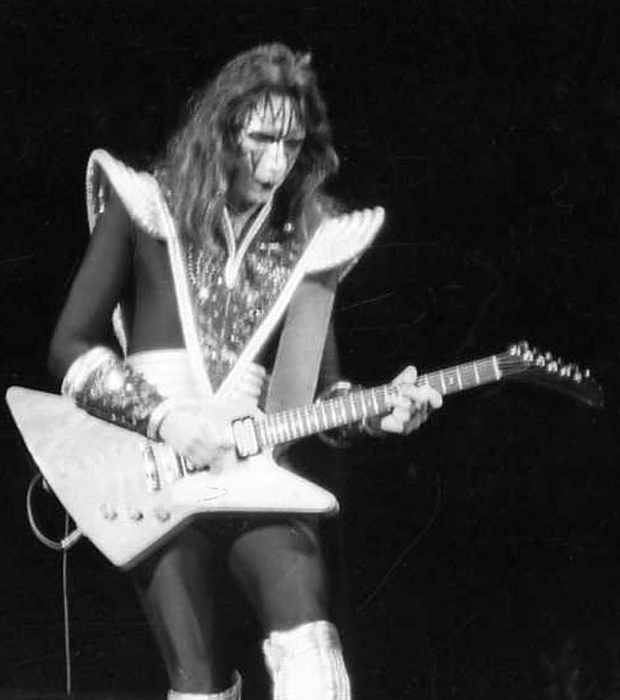The replacement bridge on the Ibanez Destroyer.
Photo taken backstage in Gothenburg, Sweden on May 26, 1976. Photographer unknown.
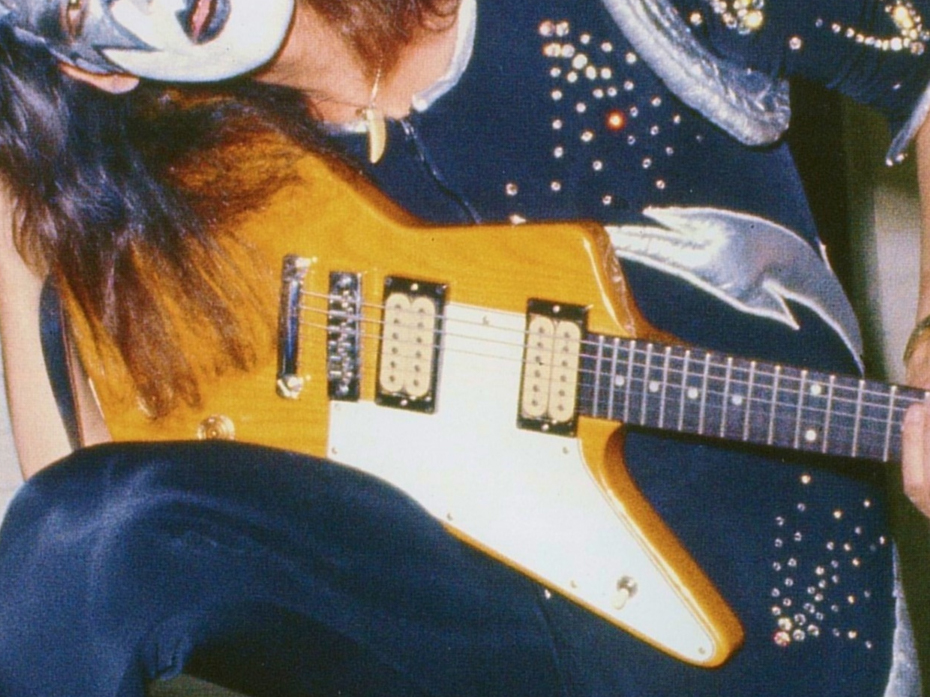
Introduced in the 1976 Ibanez Golden Oldie pamphlet under the model name 2459, the Destroyer was one of the "lawsuit" guitars produced by Ibanez. The Golden Oldies catalog clearly states that the body of the 2459 was made of "selected solid ash" with an "African Korina finish", there's no mention of the guitar actually being made of Korina. (There is also a mention in the book Ibanez—The Untold Story from 2005 that the guitars were actually made of the Japanese wood sen, commonly referred to as Japanese ash.) However, several print ads from the time (1975 and 1976) state that the body was solid korina. The excellent web site Ibanez Destroyer Information Exchange bluntly states that no model 2459 was ever made of korina wood, they were all ash (or sen). According to the Ibanez catalogue the Destroyer had a laminated maple neck with a rosewood fretboard.
This particular guitar was originally Paul's who had some modification done on it before giving it to Ace: "Around the same time I also had an Ibanez Destroyer which was essentially a korina wood Gibson Explorer copy that I gave to Ace. I'm not quite sure why I gave it to him because it was a great guitar." (Metal Edge presents KISS Alive! 1996) Ace can't quite recall whether or not that is true on account of his beer consumption in the 70's but I tend to believe Paul here because of the modifications, specifically that the original Harmonic-O-Matic bridge—essentially Ibanez's own version of the ABR-1—was replaced with a Schaller Harmonica bridge as was Paul's wont for a while in the mid-70's. This is clearly seen in this backstage photo. To the best of my knowledge Ace never tampered with the basic tune-o-matic style bridges in the 70's, electing to keep the ABR-1/Nashville on all his Les Pauls for instance, so the change to the Schaller Harmonica bridge was almost surely Paul's idea. The Destroyer first shows itself in Paul's hands in late February 1976 as seen in the photos below. (There is one photo that is possibly earlier but the date is unclear.) However, it was soon "taken over" by Ace.


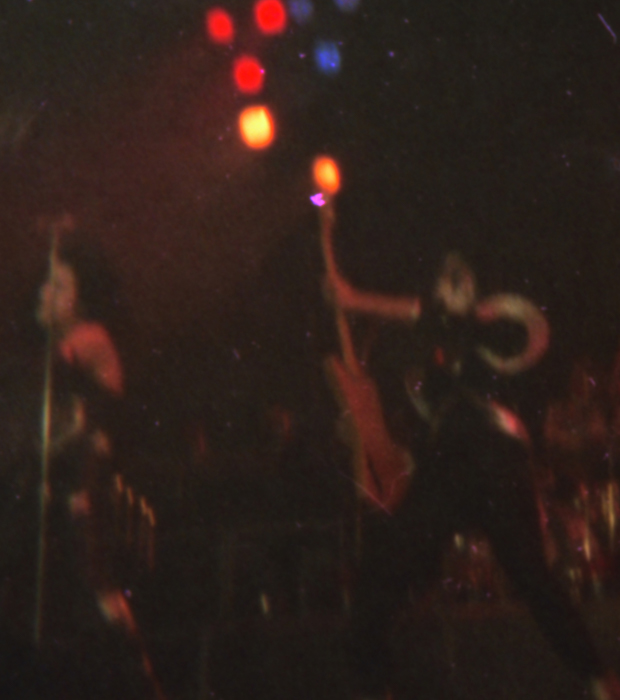
As we all know KISS had their deal with Gibson to only play their instruments on stage. They obviously broke that agreement regularly but this guitar might have been a bridge too far. Showing up on stage with a blatant copy, one that had even caused Gibson to sue Ibanez's parent company, just wouldn't fly. That's why you can see how the Ibanez logo "disappears" in the photos below. As was so often the case with KISS they simply covered the logo with a small piece of black tape. Some time between February 29 and March 8 the pickups were changed. In Honolulu it appears to still have the original Super 70 humbuckers, but in Tulsa the creme-colored DiMarzio Super Distorsion are in place.

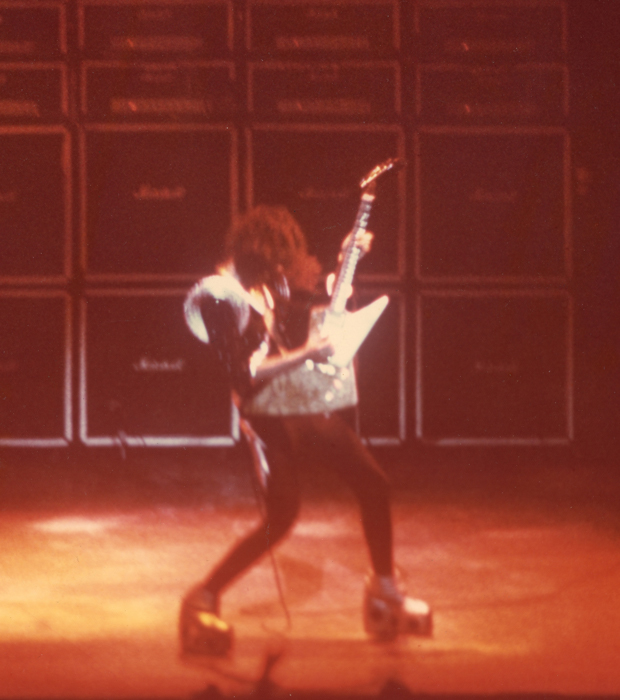

For a few shows towards the end of March, around the time that he started modifying his Gibson Flying V, Paul ended up using the Destroyer for a song or two. However, it was soon back in Ace's hands and as the collection of photos below show it was used regularly during the Canadian dates in April in and got plenty of use during the band's first European tour in May.


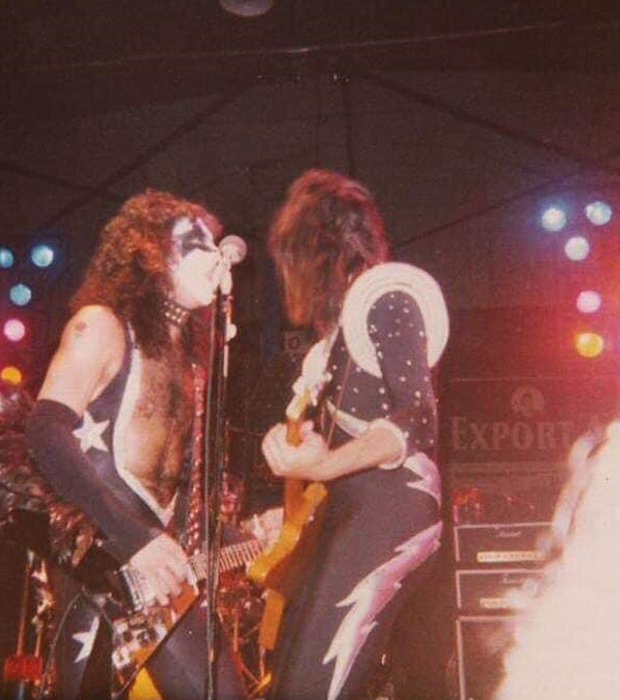

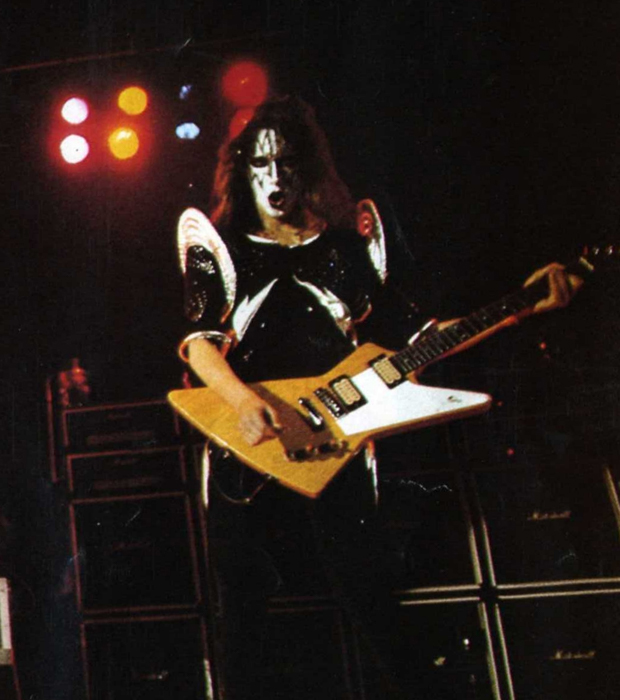


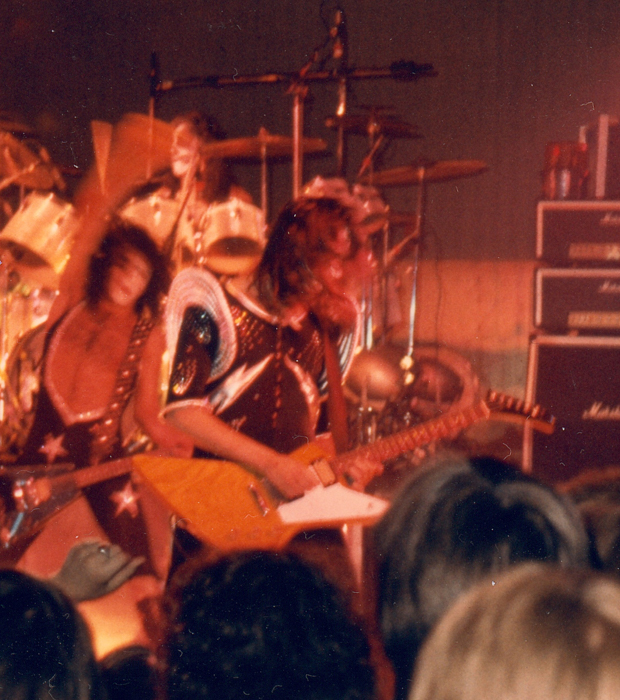
Despite how it might look in some pics Ace only had one Explorer-style guitar that he used on stage during this time. Under colored stage lights, especially red lights, the distinct wood grain of the Destroyer could appear washed-out making it appear like another guitar, but there was only one. Ace positively loved the look of the Destroyer: "that guitar had an incredible grain to the wood, it was gorgeous". (Metal Edge presents KISS Alive! 1996) Looking at the backstage photo below from one off the last shows of the European tour it's hard to argue with Ace on that point.
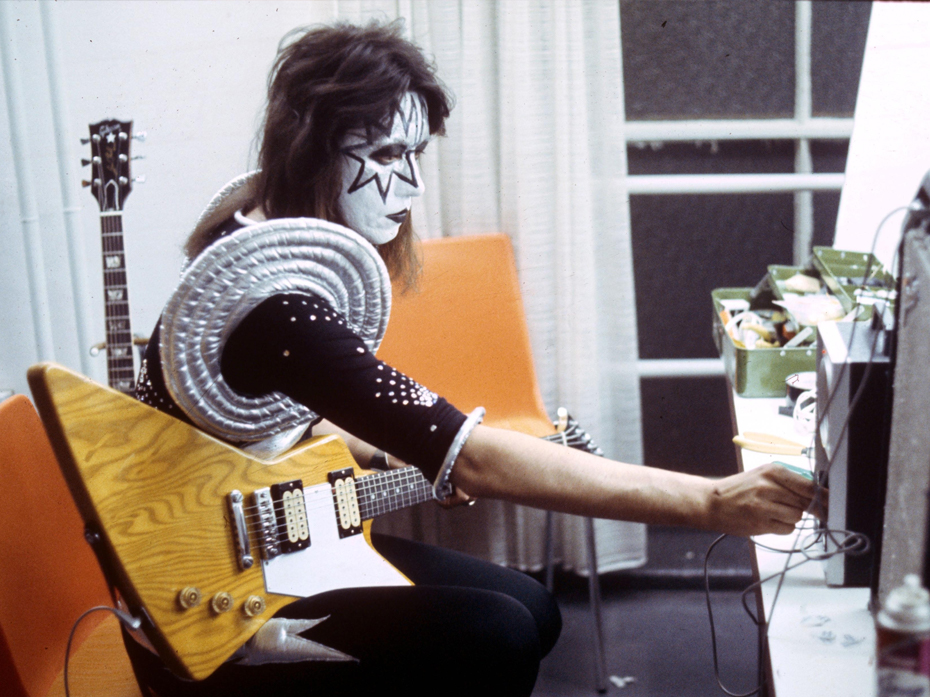
For the new stage and costumes of the Summer Tour '76 Ace retained the Destroyer. It can be seen in several shots from the rehearsals in Newburgh, NY and come opening night in Norfolk, VA on July 3 Ace (almost certainly) used it for the first three songs, just as he later did in Jersey City on July 10. As a bonus, check out the short-lived "crystals" at the front and right in the middle of the stage in the Norfolk photo.


It doesn't seem to have lasted long though. It was last seen on stage in Baltimore, Maryland just over a week into the tour. As seen in the backstage photo from Dayton, Ohio the Destroyer stayed part of the instrument lineup but as far as we can tell it was never called upon again. Ace kept the guitar though and in the first Music Life special the Destroyer is presented as part of Ace's guitar collection.
